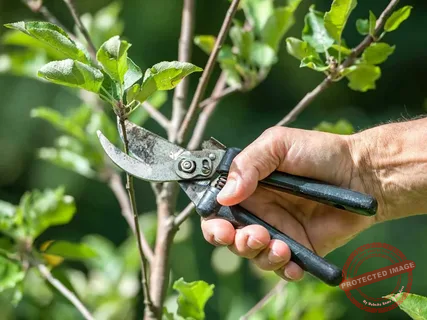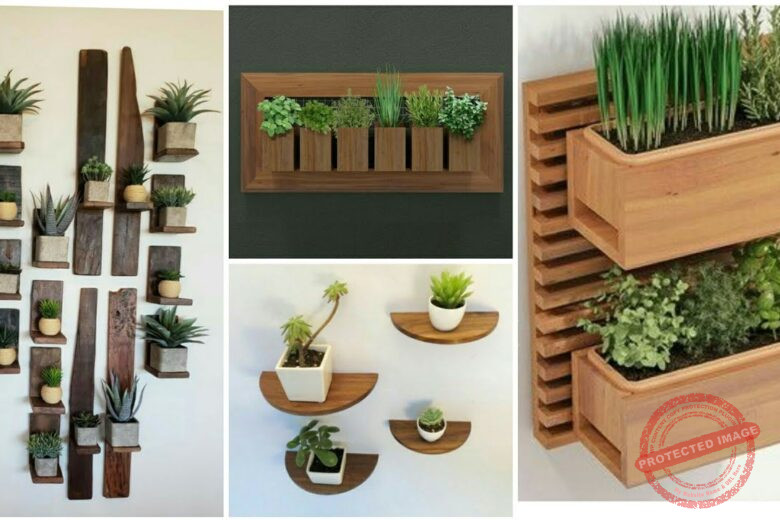There’s something special about seeing plants gently swaying from the porch or hanging in a sunny corner of your home. Hanging planters have a way of bringing life to spots that might otherwise feel empty. Whether it’s a lush fern by the window or a cascade of petunias over the porch rail, they add a touch of calm, beauty, and that “I take care of living things” pride. You don’t need fancy store-bought planters or professional skills to make one either—just a few basic materials, a bit of patience, and your creative touch.
When I first started gardening, I didn’t have much space. My small porch could only hold a few pots, and I wanted more green around me. So, I tried making my own hanging planter out of an old metal bowl, some rope, and a few knots that I learned from watching my grandpa tie hay bales. To my surprise, it looked beautiful—and it held up through rain, wind, and a couple of curious birds. Since then, I’ve made dozens more using whatever materials I could find—baskets, jars, tin cans, even wooden bowls.
That’s the beauty of learning how to make a simple hanging planter: it’s not about perfection, it’s about creativity and practicality. You’re giving plants a new home while adding a personal touch to your space. So, let’s dig into how to make one yourself—something that looks great, holds steady, and shows off your plants in all their glory.
What You’ll Need
You don’t need fancy tools to make a hanging planter. In fact, most of what you need is probably already around your home. Here’s a simple list to get started:
-
A container (a metal bowl, old pot, coconut shell, or sturdy plastic container)
-
Rope, twine, or macrame cord
-
Scissors
-
Drill or nail for drainage holes
-
Hook or nail for hanging
-
Potting soil
-
Your favorite plant
That’s it. You can go as rustic or modern as you want, depending on your materials and where you plan to hang it.
Step 1: Choose the Right Container
Almost anything can become a planter if it can hold soil and drain water. Old mixing bowls, coffee tins, baskets, or even mason jars can work beautifully. Just make sure it’s strong enough to handle the weight once filled with soil and water.
If it doesn’t have drainage holes, make a few at the bottom. You don’t want your plant’s roots sitting in water—it’s a quick way to invite rot. I like to use an old screwdriver or drill bit for this step.
Step 2: Add Drainage and Soil
Before filling with soil, it helps to add a thin layer of gravel or small stones at the bottom. This improves drainage and prevents soil from clogging the holes. Then add your potting mix—light and airy soil is best for hanging planters since it keeps roots happy and water moving.
If you’re planting succulents or herbs, use a soil mix that suits them. A good potting mix makes all the difference between a thriving plant and one that just survives.
Step 3: Make the Hanging Support
This is the part where you can get creative. Cut three or four pieces of rope or twine, each about two to three feet long, depending on how low you want your planter to hang. Tie them together at one end, leaving a small loop for hanging later.
Next, space out the ropes evenly and tie knots along each strand at equal points. This creates the cradling structure that will hold your pot. Once that’s done, place your container in the middle, adjust the ropes until it sits level, then tie another knot beneath the base to secure it.
If you’re feeling fancy, you can learn a few simple macrame knots to make it decorative. But plain rope works just fine too—it’s sturdy and has a charming, rustic look.
Step 4: Hang It Securely
Now for the big moment—hanging your planter. Before you hook it up, make sure whatever you’re attaching it to can handle the weight. A ceiling hook, porch beam, or even a sturdy tree branch works great.
Wondering how to hang planters safely indoors? Use a heavy-duty ceiling hook with an anchor screw for drywall, or mount it into a wooden beam. Outdoors, metal hooks or chains are perfect, especially for heavier pots.
Hang it at a height where you can still water and prune easily. Nothing’s worse than having to climb on a chair every time your plant needs a drink!
Step 5: Pick the Right Plant
Not every plant loves being in a hanging container. Some thrive with a little sway in the breeze, while others prefer the steady ground. For sunny spots, try petunias, ivy, or succulents. In shaded areas, ferns, spider plants, or pothos do great.
The key is to match your plant’s light needs to where your planter will hang. A shaded porch won’t suit a sun-hungry plant, and direct afternoon sun can scorch delicate leaves.
Step 6: Watering and Care Tips
Hanging planters dry out faster than ground pots because they’re more exposed to air and wind. That means you’ll need to water them more often—sometimes daily during hot months.
Stick your finger in the soil about an inch deep. If it feels dry, give it a drink. Let the water flow until it drips from the bottom. A small watering can with a long spout makes this easier.
If you’re using a lightweight container, take care when watering—it can swing or tip if unevenly filled. Support it gently with one hand while watering with the other.
Step 7: Add Finishing Touches
Want to make your hanging planter pop? Add small touches like pebbles on top of the soil, trailing plants along the sides, or even paint the container for a burst of color.
Once, I painted old tin cans white and added simple jute rope handles. I filled them with colorful petunias and hung them across the porch. They looked so charming that my neighbor thought I’d bought them from a boutique garden store. Sometimes, the simplest ideas turn out to be the most eye-catching.
Real-Life Moment: My Porch Planter That Started It All
I still remember the first hanging planter I made. It was nothing fancy—just an old enamel bowl with a bit of rope. I hung it by the porch window and planted a few string-of-pearls vines. A week later, tiny green beads began to spill over the sides like a waterfall. Every morning, I’d sip coffee and admire how the sunlight played on those little leaves.
That planter taught me something important: creating beauty doesn’t have to be complicated or expensive. It just takes care, creativity, and a little love for growing things.
How to Hang Planters Indoors
If you want to bring greenery inside, hanging planters work wonders for brightening up corners or windows. Here’s how to hang them safely indoors:
-
Choose a sunny spot with enough indirect light.
-
Use ceiling hooks or wall brackets rated for your planter’s weight.
-
Check for leaks—line the bottom of your planter with a saucer or plastic layer if watering indoors.
-
Rotate your plant every couple of weeks to ensure even growth.
A simple hanging plant above your sink, by the window, or near your reading chair can change the whole feel of a room.
Common Mistakes to Avoid
-
Skipping drainage holes: Roots need air as much as water.
-
Using heavy soil: It compacts and retains too much water.
-
Hanging too high: Makes watering and pruning difficult.
-
Ignoring sunlight: Match the plant to its light conditions.
-
Uneven ropes: Always test balance before hanging.
These might sound small, but they can make or break how well your planter thrives.
FAQs About Hanging Planters
Q: What’s the best rope for hanging planters?
A: Natural jute, cotton macrame cord, or nylon rope all work well. Just make sure it’s strong enough for your pot’s weight.
Q: Can I use recycled materials?
A: Absolutely. Old cans, jars, and baskets can all make charming planters with a bit of creativity.
Q: How to hang planters without drilling holes?
A: Use over-the-door hooks, tension rods, or hanging brackets that clamp to shelves.
Q: How often should I water hanging plants?
A: It depends on the plant and weather, but check soil daily—most need water every 1–3 days.
Q: Can hanging planters be left outside all year?
A: In mild climates, yes. But bring them inside during frost or heavy storms to prevent damage.
Quick How-To Summary
-
Choose a sturdy container.
-
Add drainage and potting soil.
-
Cut and tie ropes evenly.
-
Securely hang using a strong hook.
-
Plant, water, and enjoy your new hanging garden.
Making your own hanging planter is one of those small, satisfying projects that combines creativity with purpose. It turns everyday items into something alive and beautiful, something that brightens your home and reminds you that even small efforts can grow into something lovely. So, what kind of planter will you make first—rustic rope, painted pot, or maybe something completely your own?



